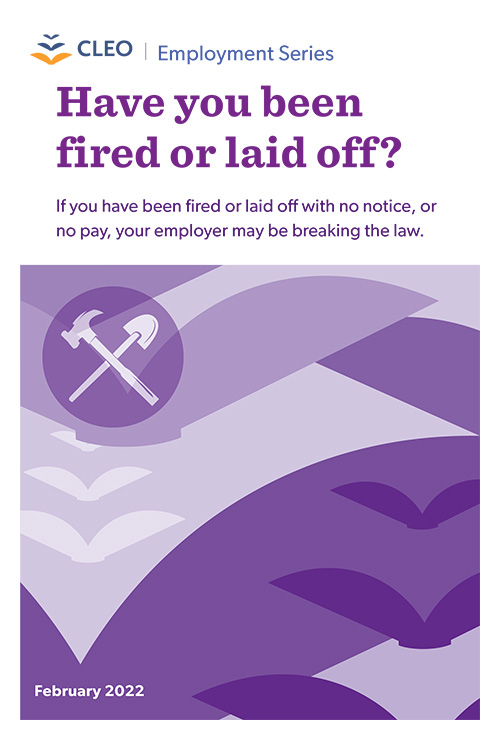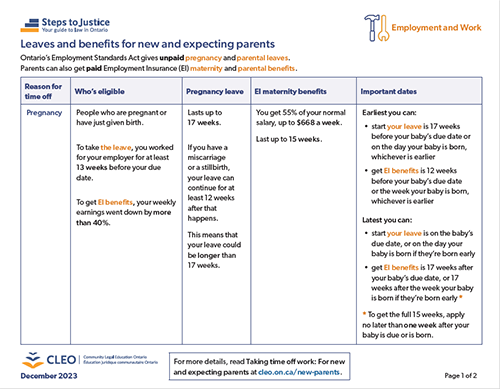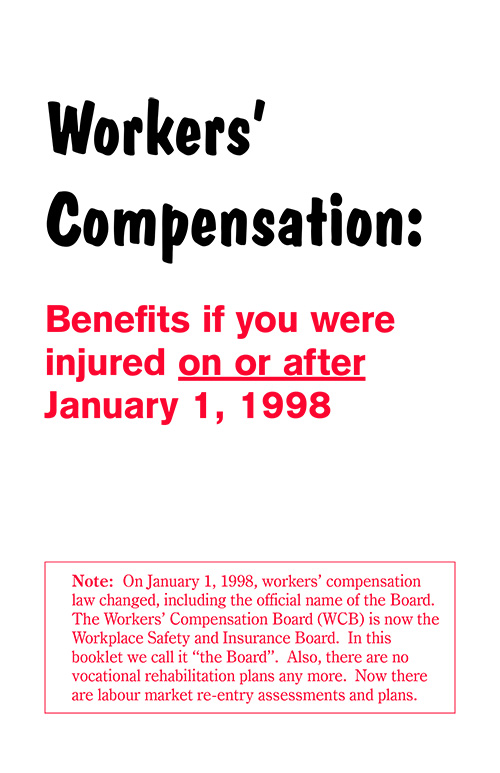Resources
Order publications
You can order CLEO’s publications for free. You can also read them online, along with the other resources listed below. For more legal information, visit our Steps to Justice website.
-

Asking for a Record of Employment (ROE)
This letter writing tool can be used by an employee to write a letter to their employer asking for their Record of Employment (ROE).
-

Employment Insurance
This resource is about regular Employment Insurance (EI) benefits. It explains who can get EI, how to apply, and how much people can get. It also covers being disqualified from getting benefits, and what happens if a worker is fired, laid off, or quits their job.
-
Employment Insurance (EI) benefits
This resource lists the different types of Employment Insurance Benefits that are available.
-
-
Have you been fired or laid off?
This resource is about legal rights in the Employment Standards Act for workers who have been fired or laid off. It covers topics such as getting notice, termination pay and severance pay, and making a claim against an employer.
-
Leaves and benefits for new and expecting parents
This resource explains the leaves and benefits available to new and expecting parents.
-
Making a claim
This resource explains what workers should do if they have an injury or disease related to their job. It describes how to apply to the Workplace Safety and Insurance Board for benefits, and what the Board does when it gets an injury report. It covers what employers must do and where to get legal help.
-
-
Taking time off work: For new and expecting parents
This resource explains pregnancy and parental leaves in Ontario law and maternity and parental benefits from Employment Insurance (EI). It also explains how many weeks of EI benefits and time off work that birth parents and adopting parents can get.
-
Workers’ Compensation: A Manual for Workers’ Advocates
This 710-page practice manual is intended as a resource for those who represent or advise people who have job-related injuries and health problems. In 30 chapters, it examines relevant laws, policies, and Tribunal decisions, discusses case strategies, and provides checklists, sample letters, and calculations.The manual is now available online for free.
-
Workers’ Compensation: Benefits if you were injured between January 2, 1990 and December 31, 1997
-
Workers’ Compensation: Benefits if you were injured on or after January 1, 1998
-
Workers’ Compensation: Benefits if you were injured on or before January 1, 1990
-
Your rights as a worker
This resource has basic information about workers' rights. It explains what these rights are and who has them. It covers topics like being discriminated against, accommodation at work, taking legal action, and where to get help in many languages.
-
Your rights at work
This resource explains the legal rights that workers have in the Employment Standards Act. This includes rules about hours of work and pay, overtime, breaks, holidays and vacations, and leave from work. It also describes how to make a claim against an employer.













